Scott Hamilton – 12 March, 2014
The laione Tongans paint on their ngatu have never looked much like the famous lion that broods over mala'ekula. While James Buchanan's lion is accurately proportioned and carefully muscled and maned, the lions on ngatu often feature torsos that seem to large or small for the limbs that grow from them, as well skinny, underdeveloped thighs and manes that are either spiky, like the coronet of a crown, or thin and wavy, like the tail of a horse.
EyeContact Essay #8
In the centre of Nuku’alofa, the capital and only city of the Kingdom of Tonga, a large stone lion stands guard over an expanse of mown grass. High fences tipped with barbed wire mark the edges of the beast’s enclosure.
The lion was raised in 1893, as a memorial to the recently deceased Taufa’ahau, who in the 1830s and ‘40s used Bibles and muskets to make himself the ruler of a unified Tonga. After crowning himself Tupou I, Taufa’ahau set about self-consciously modernising Tonga by creating institutions like courts, a civil service, and a parliament. By the time the nonagenarian Tupou I died, the godhouses of pagan Tonga had long since been replaced by prim Wesleyan chapels, men and women alike went about in scrupulously modest dress, even in the heat of summer, and a generation of young men had been trained in English, theology, and devotional music at two large secondary schools.
Taufa’ahau’s transformation of Tonga was not motivated by simple Eurocentrism. Distressed by the conquest and colonisation of Polynesian societies like Aotearoa and Tahiti by European powers, he believed that his little country could only maintain its independence by borrowing institutions, ideas, and practices from the northern hemisphere.
Taufa’ahau’s programme of modernisation strengthened his government, and won him recognition, if not respect, from European imperialists. But modernisation was a paradoxical enterprise: in order to preserve Tongan ways of life, it sought to alter those ways of life.
The lion that stands in the middle of Nuku’alofa, on the acres of grass known as Mala’ekula, or Red Square, is a suitably contradictory memorial to the founder of modern Tonga. The statue is intended as a tribute to a Tongan patriot, yet it was designed and built, at the request of the Tongan government, by an Auckland stonemason named James Buchanan, and modelled on the lions that stand in the public squares of Europe to honour dead monarchs and generals.(1)
After the raising of Buchanan’s memorial to Tupou I, lions began to appear as part of ngatu, the paintings that Tongans have traditionally made on barkcloth. When Tonga’s commoners gathered at the weddings or funerals of members of the nation’s royal family and nobility, they would often offer ngatu decorated with lions as gifts. The creatures would be juxtaposed with other symbols of Tonga’s monarchy, like crowns, and the pine trees that grow along the Hala Tu’i, or King’s Road, which leads to the palace Taufa’ahau built beside the Nuku’alofa waterfront. As the lion became a prestigious symbol, it began to appear on the ngatu commoners gifted to one another.
But the laione Tongans paint on their ngatu have never looked much like the famous lion that broods over mala’ekula. While James Buchanan’s lion is accurately proportioned and carefully muscled and maned, the lions on ngatu often feature torsos that seem to large or small for the limbs that grow from them, as well skinny, underdeveloped thighs and manes that are either spiky, like the coronet of a crown, or thin and wavy, like the tail of a horse.
The curious lions that Tongans paint on ngatu can perhaps be understood with the help of a famous passage from Ernst Gombrich’s 1960 book Art and Illusion. Gombrich told the story of Villard de Honnecourt, a thirteenth century European diplomat and artist who had the opportunity to view and sketch a live lion. In the margin of his sketch, de Honnecourt boasted that he had produced a realistic image of the wondrous creature, because he ‘drew it after nature’. As Gombrich pointed out, though, de Honnecourt’s creature looks more like one of the gargoyles on a medieval cathedral than a lion.
For Gombrich, de Honnecourt’s sketch was proof that all artists draw unconsciously on visual models familiar to them, even when they are striving to copy what is in front of their eyes. Because he lacked any visual model of a lion to guide him, de Honnecourt turned unconsciously to the creatures that adorned the churches of northern Europe.
Although Tongan ngatu artists may have wanted to imitate the stone lion at the centre of their capital, they have lacked any visual tradition that might help them in that task. Searching for a model, painters seem to have settled, perhaps unconsciously, on horses, dogs, and - less often - small cats. Certainly, the elongated torsos that mark many ngatu ‘lions’ properly belong to horses and dogs, animals that were ubiquitous in Tonga long before 1893.
It might be argued that, by depicting the lion in terms of their day to day visual experience, ngatu artists have ‘Tonganised’ the creature. (2)
In a statement written to accompany a recent exhibition, Tui Emma Gillies explains that her grandmother and mother were both ngatu artists. Although Gillies’ mother emigrated to New Zealand after marrying a palangi, she kept making ngatu and sharing them with her family and her community:
…Sulieti continued selling her craft, which now included art on tapa cloth, every Saturday morning at the Otara Markets until 2011. I would join my mother at the markets each weekend. I also began to paint on tapa cloth and eventually my works were sold alongside hers. But I wasn’t bound by the artistic conventions of Tonga.
In a recent statement on Facebook, Gillies reflected on the strange creatures her relatives liked to paint:
When I was a child my bedroom walls were covered in tapa cloth painted by my grandmother Ema from Ha’apai. One of the recurring images was what I thought were horses. My mother told me years later they were actually lions. The lions are used in tapa all over Tonga…
Where her mother exhibited her ‘Tonganised’ lions at the Otara flea markets, Tui Emma Gillies shows them in fine art galleries. Gillies’ decision to exhibit a traditionally vernacular art form like ngatu in these spaces can be compared, in its cultural significance, to the young Colin McCahon’s decision to depict stories from the New Testament in a style borrowed from comic strips. Like Gillies today, the McCahon of the 1940s was affirming the beauty and utility of an artform often considered coarse and amateurish.
Recently two lions Gillies had painted on barkcloth were shown at the Mangere Arts Centre, as part of an exhibition that No’o Fakataha, the dynamic collective of Tongan-New Zealand artists, had organised to raise funds for the victims of Cyclone Ian, which unroofed houses and uprooted coconut trees across much of the Ha’apai archipelago in January. (3)
Although Gillies’ new works show off the influence of her mother and grandmother’s ngatu, they are also unmistakably original. Gillies has developed the innovations of her predecessors, so that her lions bear very little resemblance to the animal James Buchanan left in central Nuku’alofa. As well as canine and equine qualities, one of her lions boasts the head of a mo’o, or lizard. The red eyes of both lions might belong to lizards or snakes, though they may also remind us of the glowing gaze of the beasts that squat at either end of the stage in Auckland’s venerable and baroque Civic Theatre, which was still a venue for blockbuster movies when Gillies was a child. (4)
In another recent work on barkcloth called Daughter of a Lost Dynasty, Gillies makes the vernacular, democratic impulse of her art even clearer. The painting shows Gillies’ mother wearing a crown, a necklace made of carvings of a pagan god, a dress adorned with motifs like coconut trees, and a sash.
With its careful accumulation of details designed to justify and dignify its subject, Daughter of a Lost Dynasty might remind us of Rita Angus’ ‘goddess’ portraits, but the painting has a naturalism alien to both Angus’ deities and to traditional ngatu. Gillies’ queen has old, grey skin, a jutting tooth, and a smile that may be tired, or ironic, or both. Gillies has painted a real person, rather than a symbol or motif. The naturalism of her work contrasts movingly with the airbrushed photographic portraits and flattering paintings that Tonga’s real monarchs commission from pliant artists.
To a palangi audience, Daughter of a Lost Dynasty might seem merely a skilful and affectionate portrait of an elderly woman. Many Tongans, though, may see the painting as a provocative political statement.
Gillies’ mother is a descendant of Finau Feletoa Ulukalala, a chief and warlord who is famous for seizing a palangi ship and turning its exotic canons on a terrified Nuku’alofa. Feletoa’s sons aligned themselves with Taufa’ahau, as the would-be king fought a series of wars against the venerable Tu’i Tonga and Tu’i Ha’atakalaua dynasties.
When Taufa’ahau took control of Tonga he proclaimed his Tu’i Kanokupolu line the country’s only royal family. Members of the defunct royal lines were murdered, marginalised, or forced to marry into the Kanokupolu clan. After Taufa’ahau built his palace and parliament in Nuku’alofa, Tonga’s old capital of Lapaha became a remote outlier of power. Thistles grew in its grand canal, and ivy scaled the monumental stone tombs of its ancient kings.
Although Finau Feletoa Ulukalala’s descendants were given a noble title by Taufa’ahau, they gradually lost their prestige in the twentieth century. In 1960 the family was stripped of its title and found itself reduced, effectively, to commoner status. Like many of the descendants of the old Tu’i Tonga and Tu’i Ha’atakaula kings, the descendants of Finau ‘Ulukalala can look back on a glorious past, even as they suffer contemporary obscurity.
Memories of Tonga’s old dynasties persist. In Lapaha, young men still perform a graceful version of the Me’etupaki, a dance that once entertained the Tu’i Tonga and his court. During the riot that levelled a third of Nuku’alofa’s central business district in 2006, revellers leaned out of the windows of speeding cars and shouted the slogan ‘The capital will return to Lapaha!’
Some Tongans contrast the hegemony of the Kanokupolu dynasty with the supposedly more enlightened rule of the old kings from Lapaha. When I interviewed the linguist and genealogist Lose Miller-Helu last year, she characterised Taufa’ahau and his descendants as ‘colonisers’ of Tonga, complaining that they had replaced a relatively egalitarian and proudly pagan society with a Wesleyan theocracy.
Miller-Helu’s view of the past can perhaps be likened to the notion of a ‘Norman Yoke’ that has been popular for many centuries in parts of Britain. As Christopher Hill showed in a famous essay, Britons unhappy at the injustices of their class-bound society would frequently contrast their present with a golden age that supposedly existed before the Norman invasion of 1066, and William the Conqueror’s subsequent establishment of a new royal line. The ‘Norman Yoke’ had to be thrown off, if Britain were to return to its lost state of grace.
Hill argued that, even if it relied upon a mythical view of the past, the ‘Norman Yoke’ expressed a yearning for a better future. In much the same way, the nostalgia for the past that is surprisingly common in Tonga is often linked with the dream of progressive change. Lose Miller-Helu may look back longingly at the Tu’i Tonga era, but she is also a strong supporter of Tonga’s thriving Democratic Party, which is tipped to throw the nobility out of power and form a commoners’ government after this November’s election.
With its allusions to a heroic past and a stolen legacy, Daughter of a Lost Dynasty is an undeniably nostalgic and melancholy work. But the painting gestures forward, as well as backwards. By taking a crown, an object very strongly associated with the Kanokupolu dynasty and the modern Tongan state, and putting it on the head of her mother, a commoner, Tui Emma Gillies has aligned herself with those Tongans who look forward to a more democratic, inclusive future, as well as back on a glorious past.
Scott Hamilton
(1) Buchanan’s statue has since been complemented by memorials to a series of Taufa’ahau’s successors. Malae’kula was accessible to the public until the late sixties, when it was fenced.
(2) In much the same way, perhaps, the subjects of Taufa’ahau and his successors have gradually ‘Tonganised’ many of the institutions and practices imported from the powerful countries of the northern hemisphere.
Tupou I worked meticulously and bloodily to eliminate Tonga’s old, shamanic religion and replace it with an austere Protestantism, but many of the most recalcitrant pagans eventually became Catholics, and preserved their old licentious dances inside the elaborate ceremonies and festivals of that branch of Christianity. More recently, other Tongans have embraced Pentecostalism, and have consciously or unconsciously rediscovered, in practices like glossolalia, exorcism, and trance dancing, parts of the old shamanic culture.
In economics as well as in art and religion, Tongans have resisted the imposition of exotic models. Over the last four decades Taufa’ahau’s descendants have attempted to impose capitalism on their subjects by privatising state assets, inviting foreign investors into the country, and joining the International Monetary Fund and the World Trade Organisation. But Tongans have been reluctant to forsake their small farms and family exchange networks for the brave new world of free markets.
(3) The Help Ha’apai 2.0 exhibition was organised at short notice and held on Saturday, March the 1st.
(4) Tui Emma Gillies is not the only young Tongan artist doing very innovative work on barkcloth. Although ngatu has traditionally been regarded as an art form for women, the male Tongan-based artists Visesio Siasau and Tevita Latu have both executed a number of paintings on barkcloth recently. Latu, who is the founder and leader of a collective of avant-garde artists and social activists known as the Selaka Club, mixes up traditional ngatu motifs with wild expressionist brushstrokes; Siasau, who spent many years in New Zealand and is a member of No’o Fakataha, has attracted controversy by exhibiting ngatu in which a stylised Jesus is juxtaposed with both ancient pagan kings and symbols of commercialism like dollar bills. I have blogged about Latu and his extraordinary collective at: http://readingthemaps.blogspot.co.nz/2013/12/why-tevita-latu-is-new-lou-reed.html. I discuss some of the motivations behind Visesio Siasau’s provocation in this blog post: http://readingthemaps.blogspot.co.nz/2014/01/burning-gods-letter-to-visesio-siasau.html
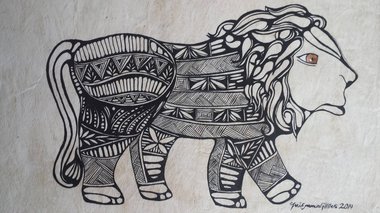
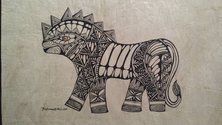
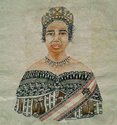
 Advertising in this column
Advertising in this column Two Rooms presents a program of residencies and projects
Two Rooms presents a program of residencies and projects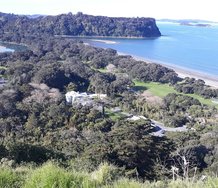
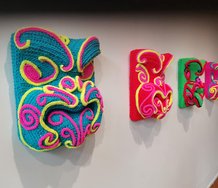

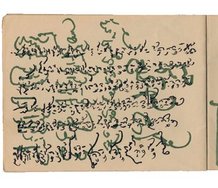
This Discussion has 0 comments.
Comment
Participate
Register to Participate.
Sign in
Sign in to an existing account.